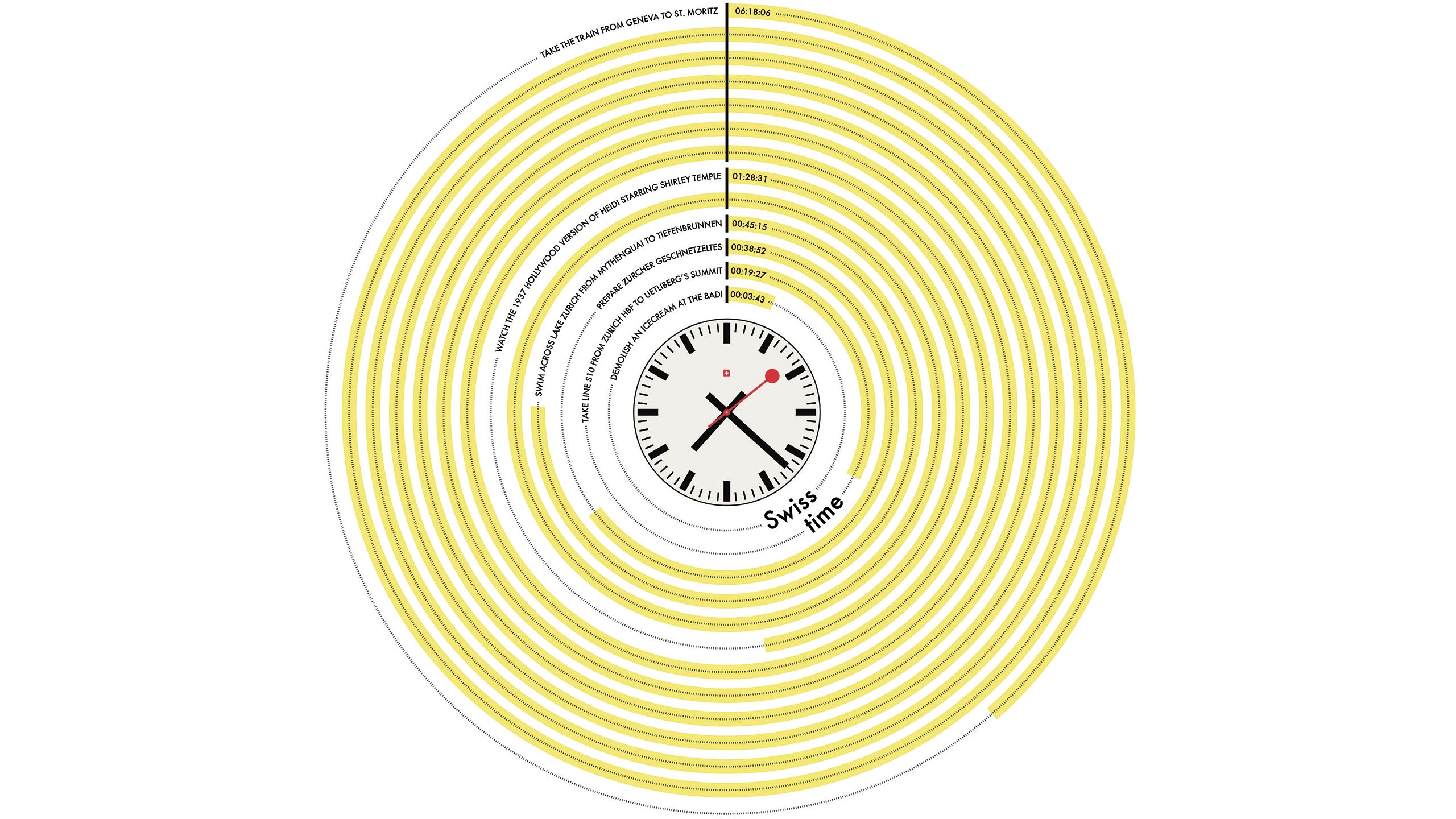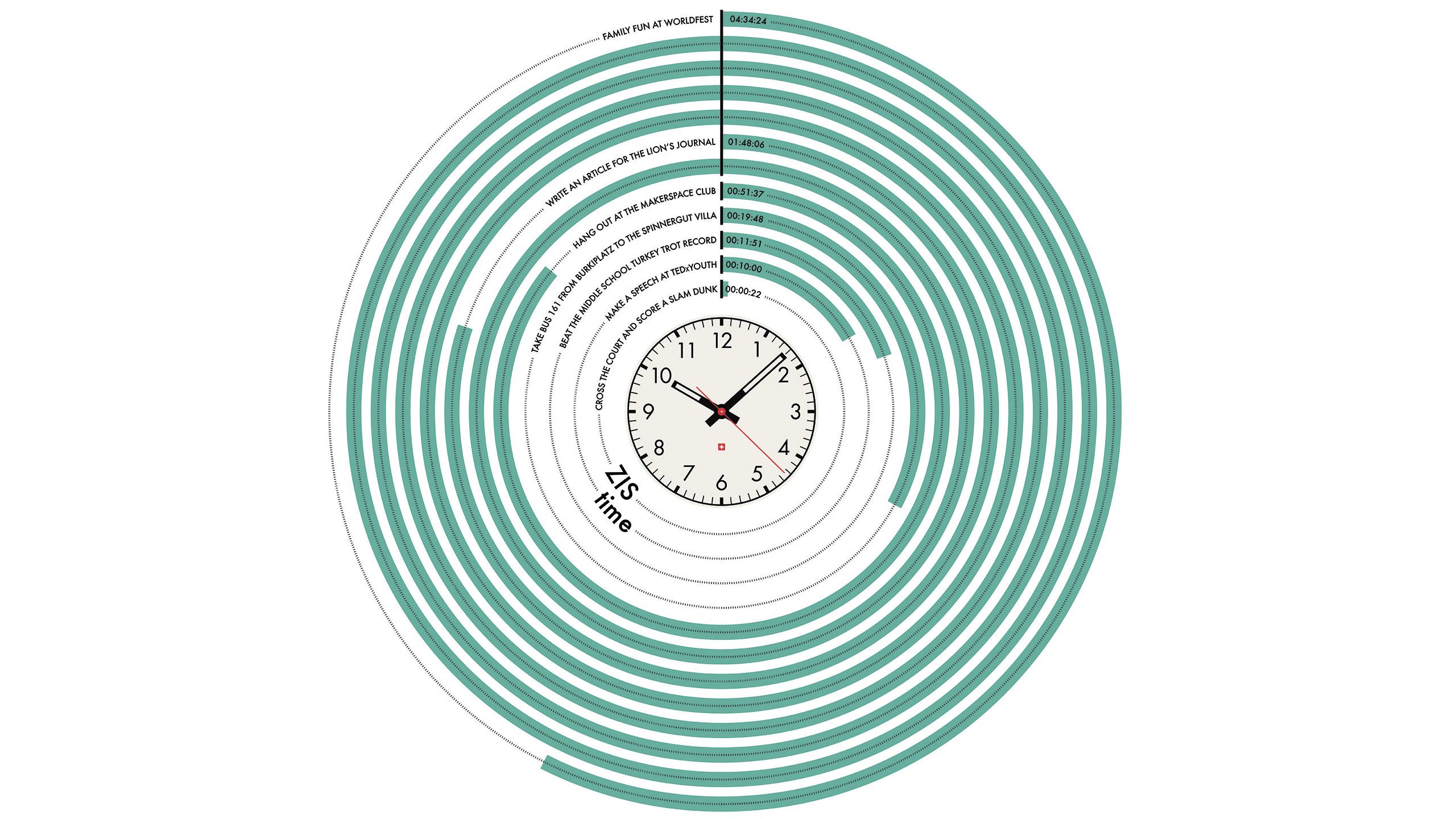A journey into time
Swiss watchmaking has a strong reputation. But what is it that makes a Swiss watch so special? We asked watch-lovers from within the ZIS community to share their expertise and memories of this uniquely Swiss tradition.

You may need to squint a little to pick them out – they’ll usually be found in tiny letters at the bottom of the dial – but the words ‘Swiss made’ can have a profound effect on the value of your wristwatch. Consumers are willing to spend between 20-50 per cent more on watches with genuine Swiss provenance, according to the industry portal, Swisstime. But what is it that makes them so special, and such a treasured part of the Swiss experience?
In short: expertise, heritage and prestige – a combination that can only really be found in Switzerland. Indeed, visiting a leading luxury watchmaking manufacturer can be eyeopening. The craftsmanship is impeccable; rare and limited edition pieces are still made entirely by hand, taking hours of work to complete.
The protection of the ‘Swiss made’ label has been one of the Federation of the Swiss Watch Industry’s main activities, says its president, Jean-Daniel Pasche. “It’s a priority because we have to ensure our credibility,” he says. “Customers trust and appreciate the commitment of the Swiss brand to quality. When they buy a Swiss watch, they’re buying into more than 300 years of tradition.”
Switzerland’s association with horology began as early as the 16th century, when Huguenot refugees brought their clockmaking expertise to Geneva. The austere rule of John Calvin, under which jewellery was banned, meant local goldsmiths were eager to learn the newcomers’ craft. The watch industry flourished, soon spreading over the Jura Mountains. By the mid-1800s, Switzerland had become the world’s most important producer of watches, with its most prestigious houses establishing a reputation for accuracy, innovation and elegance that has persisted to the present day.
One of the biggest challenges faced by the industry was the ‘quartz crisis’ of the late 1970s, when the mass production of electromechanical watches in the Far East plunged traditional watchmaking into turmoil. In the early 1980s, Switzerland struck back with the low-cost Swatch, and it was in this environment that Robert Gottschalk, Class of 1978 (1973-78), began his career as a designer.
On leaving AISZ, he had studied architecture for several years before switching to industrial design. One of his first commissions after university was to design a series of watches for Twix, a competitor to Swatch. “It was fun,” he says. “We did a line of about 10 watches. Of course, you couldn’t compare these plastic watches to something like a Tissot. And it was still frowned on a little bit – the Swiss doing what the Japanese had done – until they accepted these watches as legitimate.
“I think the biggest challenge with watches, and the thing that fascinated me most about the design process, is that it’s an incredibly small surface you’re working with. You have a canvas that’s just two to four-and-a-half centimetres in diameter. To this day, I’m still amazed when I go to the watch fair in Basel, and see how designers manage to reinvent the wheel each year, or reinvent time.”
Robert still has three of his own designs, but his day-to-day watch is a Mondaine – the classic design based on the well-known and much-admired Swiss railway clock. “It’s such an iconic piece,” he says. “It was added to the collection of the Museum of Modern Art in New York. It’s really hard to beat the simplicity and clarity of it.”
Les Ambassadeurs has been a landmark on Zurich’s Bahnhofstrasse since 1964, stocking and servicing a wide selection of Swiss watch brands. Assistant branch manager Fabian Ackermann says: “Because I’m Swiss, I’m proud of what we produce, and I like to share that with our visitors – giving them the feeling that they’re seeing something very special. It’s a great field to work in.”
One brand that inspires a dedicated following all over the world, he says, is Breguet. Founded by the Swiss watchmaker, Abraham-Louis Breguet, in 1775, the company introduced many of the technical advances that are still found in top-end watch movements. It has enjoyed the patronage of figures including Marie-Antoinette, Napoleon Bonaparte, Leo Tolstoy and Winston Churchill. “For me, it’s one of the most interesting brands in terms of history,” says Fabian. “Breguet was the most famous watchmaker in the world, and responsible for so many different complications.”
That love affair with Swiss watches often begins at school. Sergey Shetyashin (Grade 11) was presented with his father’s Tag Heuer 1120 on his 16th birthday. “It was the first Swiss watch he ever bought, at the start of the 90s,” he says. “It’s one of my most prized possessions, and I’ll always look after it. It’s sturdy and practical, and has never broken down.”
Leslie Struthers, Class of 1979 (1974-79), still mourns the loss of the blue-face Bucherer watch that she received from her parents to mark her graduation from AISZ. She recalls the moment, around 30 years ago, while on her way to work, she realised with horror that the watch was no longer around her wrist. “I was walking to the bus, and it disappeared,” she says. “I just assume it fell off and I didn’t notice. I spent that morning walking back and forth on that street, retracing my steps and looking in hedges. I never found the watch, and I miss it to this day. I think one of the reasons why it upset me was that it was a tangible tie to that period of my life – I was in Zurich for around six years, and it was a wonderful time.”
For Chris Oggerino, Class of 1979 (1976-79), the indestructibility of a certain brand of watch made it an object of desire. “While at AISZ, I was about to play volleyball with my classmate, Bill Brems [Class of 1979 (1976-79)],” he says. “He walked on to the court and realised he was still wearing his watch. He took it off and just slid it against the wall, out of the way. I looked at him questioningly and he said, ‘It’s an Omega – they’re tough.’
“That was the testimonial of the year for me. I decided at that moment that I would have one of those some day. I’m happy to report that I now own what I consider to be the ultimate watch: the Omega Solar Impulse, limited edition. I love my watch and, no, Apple won’t be replacing it, ever!”
In fact, many in the Swiss watch industry are now reporting that the threat from devices such as the Apple Watch is less profound than originally feared. Jean-Daniel Pasche is confident about the future of the industry. “A traditional Swiss watch has to satisfy emotion: we like wearing it and we expect it to have a long life. We have the means to keep developing, we have the brands, the technology and the people, and we’ll keep working on finding new customers.


